Pest Control Northern Beaches, Sydney, Australia
Are you looking for environmentally friendly Northern Beaches Pest & Tick Control? The Northern Beaches and North Shore has been our local service area for over 40 years.

Your family and pets are safe with us. Check out our Google reviews, testimonials and ask any of our current clients.

One of our many happy clients in Frenchs Forest
Transcript: “Bruce, thanks again for coming up as I mentioned. As you know we’ve been customers of yours for six years now and so ourselves and our neighbours have been really happy with all the work that you put in, and that’s why we keep calling you back every year.
– and we’re in French’s forest on the Northern Beaches”

Here are some pf the flea and tick treatment products that our council recommends:
Advantage (Fleas)
Advantix (Fleas and adult ticks) *Warning! Hazardous for cats
Advocate (Fleas, heartworm and worms)
Bravecto (Common fleas, brown and bush ticks, ear mites)
Capstar (Fleas)
Comfortis & Comfortis Plus (Fleas)
Frontline (Fleas and paralysis ticks)
Nexgard Spectra (fleas, adult ticks & worms)
Revolution (Cat) (Adult fleas, eggs and larvae. Ear mites, hookworm roundworm)
Revolution (Dog) (Fleas and ticks, ear mites, hookworm and roundworm)
Sentinel (Fleas) and Dog Tick Control
*Advantix is not hazardous for dogs but is the opposite for cats. It’s very dangerous for cats because cats don’t metabolise some of the ingredients very well in the product.
*There is shortage of Revolution dog & cat products worldwide. “Selapro” is an alternative has the same active ingredient – Selamectin. You may purchase Selapro in the Northern Beaches for adult ticks and tick bites at Petstock situated at 52 Darley Street, Mona Vale or Petbarn 1416 Pittwater Road, North Narrabeen.
Ticks on Humans Vs Ticks on Dogs
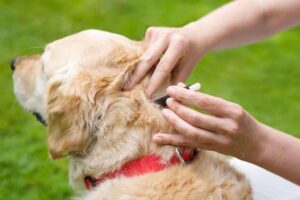
Photo: Removing tick from dog
Adult ticks are ectoparasites that feed on the blood of animals, including humans and dogs. While the basic characteristics of ticks remain the same, there are some differences in how they behave and the risks they pose when considering ticks on humans versus ticks on dogs. Here are some key differences:
Tick Species: There are various species of ticks, and some may prefer certain hosts over others. For example, the black-legged tick (Ixodes scapularis) is a common vector for Lyme disease in humans, while the American dog tick (Dermacentor variabilis) is often found on dogs and can transmit diseases like Rocky Mountain spotted fever.
Preferred Hosts: Ticks can bite and feed on both humans and dogs, but some tick species may show a preference for one host over the other. Certain ticks are more commonly found on dogs due to their natural habitat and behavioral patterns.
Diseases Transmitted: While adult ticks can transmit diseases to both humans and dogs, there are some variations in the types of diseases transmitted. For example, human-tropic ticks like the black-legged tick can transmit Lyme disease, anaplasmosis, and babesiosis to humans, while dog-tropic ticks may transmit diseases like canine ehrlichiosis and babesiosis to dogs.
Size and Detection: Tick species may differ in size, and this can affect their detection. Some ticks may be more easily spotted on a dog’s fur due to their larger size, while others, especially nymphs (young ticks), can be quite tiny and challenging to detect, especially on both dogs and ticks on humans.
Attachment Sites: Ticks may have preferences for attaching to specific areas on hosts. For instance, ticks on dogs may commonly attach around the ears, neck, or between the toes, whereas ticks on humans may prefer hidden areas such as the groin, armpits, or scalp.
Removing Ticks: When it comes to tick removal, the process to remove a tick is generally the same for both humans and dogs. It’s crucial to remove the tick as soon as possible to minimize the risk of disease transmission. Tweezers should be used to grasp the tick’s head as close to the skin as possible and then gently remove a tick with steady pressure. After removal, it’s essential to clean the bite area thoroughly. In the Northern Beaches removing adult ticks and treating tick bites does not necessarily require a trip to the hospital.
Disease Risk: While both ticks on humans and dogs can transmit diseases from their bites, the severity and types of diseases in the Northern Beaches can vary. Some diseases may have more severe consequences for humans, while others may be more dangerous for dogs.
Regardless of whether a tick bites a human or a dog, it’s essential to be vigilant and take preventive measures to reduce exposure to ticks. This includes avoiding tick-infested areas, using tick repellents, performing regular tick checks on pets and family members after outdoor activities, and seeking medical attention if tick-related illnesses are suspected.
Did you know that having a dog or a cat will double the chances that you will find a tick on yourself this Spring/Summer?
Plus being exposed to adult ticks and receiving tick bites raises the risk of getting tick-borne diseases such as Lyme Disease?
Video Transcript:
“So Jack was missing for 24 hours we were very very worried. Now the neighbors had seen him, my little girls haven’t seen him and then we were about to go out and
we found him hiding under the car and looking very worse for wear.
Straight to the vet we came the closest one was this one and luckily he was seeing two straight away.
Jack came to see us because the owners had noticed that he was having trouble walking and he just wasn’t himself out of sorts and one of our vets assessed Jack and found that he
was struggling to walk. He was having a little bit of trouble breathing. Grunting a little bit when they listened with the stethoscope and I guess those symptoms in cats are kind of indicative
of tick paralysis. Certainly raises our suspicion of tick paralysis so we were very suspicious that that might be the case.
But really it’s finding the tick that certainly confirms the diagnosis. We suggested to Kate that we keep Jack here and conduct some further examinations and that includes obviously clipping all
off Jack’s hair off under sedation.
We were luckily enough able to find a tick which confirmed that Jack was suffering from tick paralysis. Which means then that we can start treating jackers as quickly as possible.
So that consisted of putting Jacqueline on a drip initially after some sedative and giving tick antiserum to Jack to help neutralize the the toxin that was in Jack’s system that was binding
to the the nerve receptors in Jack’s body and stopping Jack from using those nerves which is causing the wobbliness in the back legs.
The laryngeal paralysis and and also making Jack feel generally unwell and nauseous.
So the treatment normally involves admitting the patient to the hospital. Obviously like Jack needed to stay with us for a couple of days.
We needed to place an intravenous catheter in Jack’s leg. You can see that Jack had his cannula in his front leg here and we gave Jack some sedative just to keep him calm.
One of the biggest issues with cats with tick paralysis is that they become very stressed and stress can make them breathe more rapidly. When they’ve got laryngeal paralysis they’re partially obstructed in their airways. So when they’re breathing more rapidly they this pup becomes more pronounced then they get more stressed and it becomes a vicious cycle.
So sedation really helps to break that that cycle and get them to relax and breathe more calmly and slowly.
And it allows us also to clip all their hair off just to make sure they haven’t got any more ticks they stay in hospital in for a few days on a glucose drip.
And we restrict access to food and water until they’ve got that swallowing reflex back which can often be impaired. Also with tick paralysis just to make sure they don’t throw up and have food
or saliva or vomit go down the wrong way. Living in the Northern Beaches and being exposed to adult ticks and tick bites is a worry.
Yeah, so it’s really I guess once the initial tick serum has been given and you know we’ve eliminated any other ticks on the animal by clipping them and spraying them it’s really about nursing
care supportive care in hospital. So making sure that we’ve got some energy going in and some fluids going in by the drip.
And making sure that the patient is comfortable, stress-free we also make sure that their bladders’ looked after. A lot of cats lose the ability to urinate, so we make sure that their bladder
doesn’t get too full, we often help them go to the toilet. It also consists of looking after their eyes particularly, because the ticks are often on on their head and they can actually lose the
ability to blink. So we make sure that they’re getting ointment in their eyes every four hours, so that their eyes don’t dry out and they don’t develop any injuries to their eye.
All that kind of nursing care and supportive care. Once they’ve had the initial dog tick control serum just to get them into a state where they can go home safely and their care can continue at home with the owner.
I’m so happy to see him back in full of beans again, eating happy engaging with us – and who needs extra cuddles he’s a little bit cold now, though”
We have been organising effective and thorough pest inspections for this area over the past 4 decades. We’ve also treated many homes with all sorts of pests and always get the job done on time with fantastic results! We offer a whole variety of tick control Northern Beaches and North Shore. Our pest management services including Pre-Purchase Pest Inspections, Pest and Building Inspection and Termite Inspections (both Visual and Thermal Termite Inspection options are available).
Mobile Users Only Click Here To Call 0417 251 911
 Picture taken of BayView Golf Course. We are well equipped to tackle even large pest control jobs, often public grounds will have problems with rodents or ticks in some areas.
Picture taken of BayView Golf Course. We are well equipped to tackle even large pest control jobs, often public grounds will have problems with rodents or ticks in some areas.
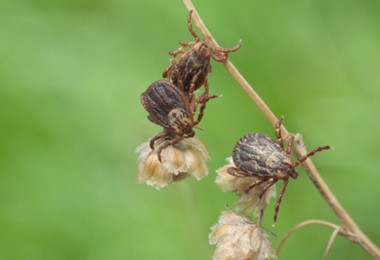
All of our operators are qualified beyond the state requirements for pest control. Which means they have the necessary training and experience to handle almost any pest infestation or issue. During winter it becomes even more important to have a thorough pest inspection conducted due to the fact that rodents become more active and will try to establish themselves in residential homes or in commercial kitchens.
Call us on 0417 251 911 or email bruce@a1pestcontrol.com.au
One of the biggest concerns in this area are ticks. This is due to it being a bushy area close to the beaches.
See our video below on how to get dog tick control in the Northern Beaches using safe, low toxic methods.
Video Transcript:
“Hi this is Joel with A1 Pest Control. I am here in Avalon Beach helping one of our clients with a tick issue
How we deal with ticks is we spray these bushes all around the house with a low toxic and non-fuming chemical that’s safe for you, your children and your pets.
And we also lay ant sand on the ground next to all these bushes. So if you are in need of a tick spray in Avalon Beach (Northern Beaches) just give us a call at A1 Pest Control.”
 Belrose SuperCentre, a great place to do your weekly shop as it has a wide variety of shops that cover almost everything you could need! Often large shopping centres hide severe rodent infestations, especially when they have poorly scheduled pest control. We aim to develop a schedule that allows for complete rodent management!
Belrose SuperCentre, a great place to do your weekly shop as it has a wide variety of shops that cover almost everything you could need! Often large shopping centres hide severe rodent infestations, especially when they have poorly scheduled pest control. We aim to develop a schedule that allows for complete rodent management!
Record Numbers of Infestation in 2023
With above average rainfalls that Sydney-siders have experienced over the past months of Winter, normal maintenance of backyard areas has been delayed.
Unkempt lawns have become a massive breeding site for paralysis ticks and those pesky fleas. Our veterinary hospital doctor Dr Paul McGeown – B. Sc. BVMS reported that this is the “perfect storm” for these parasites to attack.
Tim of A1 Pest Control said last week “Damp, warm weather which accompanies spring time is breeding heaven for ticks and fleas. The Northern Beaches and North Shore are notorious for adult ticks and tick bites. You have to employ really good flea control and tick control. During these increasingly warm months is the best time to take action and prevent the transmission of diseases.”
“The public need to try and prevent the entry of bandicoots and possums into their yards.
Try and discourage them from gaining access by having lighting on continuously during the night for a few nights in a row and by making sure that pets are being bathed with a good flea shampoo, like Advantix Dog Fleas & Ticks Control.
It will take 24 to 48 hrs before bacterium is expelled from the tick into kids or dogs and cats. Therefore if you find a tick on a pet or child remove it IMMEDIATELY to reduce the odds of infection spreading. Make sure to completely remove the mandible and head from the skin.“
North Harbour Reserve, nestled on Condamine Street in Balgowlah, boasts a range of amenities for visitors to enjoy.
Among its offerings are a conveniently situated half basketball court, a vibrant playground, and a meandering concrete path along the picturesque waterfront.
The Reserve also features well-maintained barbecue facilities and accessible public toilets.
Esteemed for its popularity, North Harbour Reserve stands as a favored destination, providing a scenic backdrop for delightful picnics and barbecues with both family and friends.
The lush surroundings and inviting facilities make it an ideal spot to unwind and create lasting memories in the company of loved ones.
Tick Control For Yard
When it comes to tick control in your yard, there are several measures you can take to minimize the presence of ticks. Here are some helpful tips:
1. Clear vegetation: Ticks thrive in tall grasses and dense vegetation. Regularly mow your lawn, trim shrubs, and remove leaf litter to reduce tick habitat in your yard.
2. Create a barrier: Consider creating a physical barrier between your yard and bushland areas. This could be in the form of a gravel or wood chip border to deter ticks from entering your yard.
3. Discourage wildlife: Ticks can hitch a ride on animals, so it’s important to discourage wildlife from entering your yard. Install fencing to keep out bandicoots & possums, which are common carriers of ticks.
4. Regular maintenance: Keep your yard tidy and well-maintained. This includes removing weeds, fallen branches, and other debris that could provide hiding places for ticks.
5. Consider landscaping modifications: Ticks prefer moist, shaded areas. Trim tree branches and bushes to allow more sunlight into your yard, as this can make the environment less favorable for ticks.
6. Use tick-repellent plants: Certain plants are known to repel ticks in Sydney. Examples include lavender, rosemary, lemongrass, and marigold. Consider incorporating these plants into your yard landscaping.
7. Apply tick control products: There are various tick control products available, such as sprays and granules, that can be applied to your yard. These products can help reduce tick populations. If you are doing a DYI treatment, wear appropriate PPE, follow the instructions carefully and use them sparingly to minimize environmental impact. At A1 pest control, we use a combination of Brigade granules, acaricides labeled for outdoor backyard use and a low toxic residual spray that are safe for children and pets.
8. Pet care: If you have pets, ensure they are regularly treated with tick prevention products. Consult your veterinarian to remove a tick and for appropriate tick control measures for your pets.
9. Personal protection: When spending time in your yard, wear long sleeves, long pants, and closed-toe shoes. Tuck your pants into your socks and use insect repellents containing DEET or picaridin. Always be prepared in the Northern Beaches for adult ticks and tick bites by wearing the best PPE.
10. Check yourself and your pets regularly: Remember, while these measures can help reduce the risk of ticks in your yard, it’s important to remain vigilant and perform regular tick checks on yourself, family members, and pets, especially after spending time in outdoor areas where ticks may be present.
If you have specific concerns about dog tick control in your local area, I recommend consulting with local pest control professionals or authorities who can provide tailored advice based to remove a tick from your pet, advice on your region and tick species prevalent in your area.
 The Pittwater RSL Club – well established and bustling hub for activity and socialising.
The Pittwater RSL Club – well established and bustling hub for activity and socialising.
Ticks – Why you should be worried!
Ticks have become a fairly common inhabitant of the Sydney region. They are predominantly found along the Northern Beaches area however, pets have been found with them from many other suburbs. The notorious Paralysis Tick (lxodes holocylus) is found all the way along the east coast and inland ranging up to 50KM!
What do paralysis ticks look like?
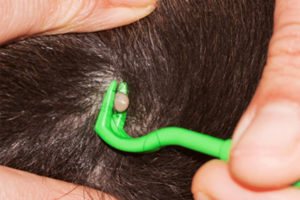
Photo: Removing engorged tick from dog
These ticks have missing divisions in their bodies, have no antennae and have 8 legs. The larval stage have only 6.
What are their habits?
They suck the blood from mammals, birds and reptiles. They wait on vegetation with their legs stretched out until they make contact with their new host.
Pest Groups
There are 2 major groups in the Northern Beaches and North Shore:
1. Soft ticks (Family Argasidae) that have a wrinkled appearance and these ones rarely bit people.
2. Hard Ticks (Family Ixodidae) that have hard flat bodies and elongated mouthpart with rows of backward pointing teeth. These ones readily bite humans. Over 95% of all tick bites in Eastern Australia are caused by the paralysis tick. Bite may cause paralysis, allergic reactions, tickborne illnesses and tick typhus.
This means that most suburbs within the Sydney region and even out in the Hills District might have tick infestations developing on properties and around homes.
They prefer areas that are moist, humid and temperate. They don’t tolerate high or low temperatures well and are vulnerable to any hot, dry winds. As such they’re hard to find due to residing in hard to see spots. The Paralysis tick is found most commonly in moister areas of forest that have a temperate climate, in foliage that is less than one meter tall. This is their preferred height as it allows them to easily attach to their favourite size hosts, which is often your beloved pet!
DIY Tick Control Tips!
Simparico Tri Chewable tablets are great for both flea and tick control!
Non-toxic Tick Control
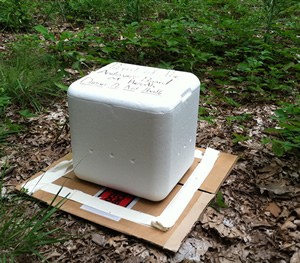
There are Non-Toxic methods of tick control which can turn out to be very effective, such as the eskibox tick trap. This is especially useful when you need to do some garden tending or weeding.
The eski, combined with some dry ice, slowly releases Carbon Dioxide which attracts ticks. This is due to the fact that ticks interpret the Co2 to be coming from a food source, such as your pets, which will lure them to the eski.
Make sure to play the eski on a piece of sturdy cardboard and surround it (the eski) which dual sided tape, this tape will trap the ticks that are lured in by the Co2 and they’ll starve or die of dehydration over time.
Where to Buy Dry Ice
BOC Gas & Gear sell dry ice and have many stores where you may purchase dry ice for the strategy.
Another eco friendly way to control ticks is to spray non-toxic garlic juice on your lawn twice a year. The garlic spray works well as a repellent for mosquitoes and ticks as they hate the smell of garlic. Ticks can also be encountered in trees which is why many people will find ticks behind their ears, neck and even armpits. As well as finding them attached behind knees after walking through shrubbery.
The AARB (Australian Association of Bush Regenerators) identify the NSW South Coast, Sydney, Central Coast and Coffs Harbour regions as areas where there is a very high likelihood of Tick-borne diseases and as such have identified them as Tick-borne Disease hot spots.
Dr. McManus states that ticks are constantly expanding and becoming more prolific due to the high rainfall and perfect environment for tick development.
The results of tick bites vary, but those who are allergic to them can have reactions that range from skin reactions (rashes) to anaphylaxis or even paralysis. The latter is less common among humans but can affect children. Ticks are also known for the transferal of Lyme disease which can affect any organ in the body, commonly involving muscles, joints, nerves and the heart. If you are exhibiting any signs of Lyme disease consult a doctor immediately!
If you’re looking to get rid any ticks in the Northern Beaches that might be hanging around in your yard of if you’ve recently come across any ticks on your pets then give us a call ASAP. We’re happy to give advice over the phone, including letting you know what measures should be taking before any tick treatment. We can also organize a tick treatment for your home to get rid of ticks that might be preying on your beloved pets.
Ticks are small blood-sucking parasites that can transmit a variety of diseases, including Lyme disease, Rocky Mountain spotted fever, and ehrlichiosis. These diseases can cause serious health problems in both humans and pets. In the Northern Beaches region of Sydney, ticks are a common problem, particularly during the warmer months. In this article, we will discuss some of the most effective methods for tick control in the Northern Beaches region.
Tick Prevention Tips
Prevention is always the best approach to tick control. There are several things you can do to reduce your risk of encountering ticks in the Northern Beaches region.
Avoid Tick Habitats
Ticks are commonly found in areas with tall grass, brush, and wooded areas. When hiking or spending time outdoors, try to stay in the middle of the trail and avoid walking through areas with tall grass or brush.
Wear Protective Clothing
When spending time outdoors, wear light-colored clothing that covers as much skin as possible. Tuck your pants into your socks to prevent ticks from crawling up your legs. Wearing a hat can also help protect your head and hair from ticks.
Use Tick Repellent
Using a tick repellent can help keep ticks away from your skin, reduce adult ticks populations and tick bites. Look for products that contain DEET, picaridin, or oil of lemon eucalyptus. Apply the repellent to your skin and clothing before heading outdoors.
Check for Ticks Regularly in the Northern Beaches
After spending time outdoors, check yourself, your children, and your pets for ticks. Ticks can be difficult to see, so be sure to check in all the creases and folds of your skin to remove a tick. Check your pets’ fur and skin, paying particular attention to their ears, armpits, and groin area.
Tick Control Methods
If you live in the Northern Beaches region of Sydney, tick control is an important part of protecting your health and the health of your pets.
There are several effective methods for tick control that can help reduce your risk of encountering ticks in your home or yard.
Keep Your Yard Tidy
Ticks thrive in tall grass, brush, and leaf litter. Keeping your yard tidy by regularly mowing the lawn, trimming overgrown bushes and trees, and raking up leaves can help reduce tick populations.
Use Tick Tubes
Tick tubes are small cardboard tubes that are filled with cotton balls that have been treated with a tick-killing insecticide.
The tubes are placed in areas where mice and other small rodents are likely to be, such as around the perimeter of your yard.
The rodents take the cotton balls back to their nests, and the insecticide kills any ticks that are present. This method is safe for humans and pets and is highly effective at reducing tick populations.
Use Chemical Treatments
There are several chemical treatments that can be used to control ticks in your yard. These treatments include sprays, Brigade granules, and perimeter treatments. These treatments should only be applied by a licensed professional and should be used with caution around children and pets.
Dog Tick Control – Treat Your Pets
One of the most effective ways to control ticks is to treat your pets with a tick preventative medication.
There are several options available, including oral medications, topical treatments, and collars. These medications work by killing ticks that attach to your pet before they can transmit disease.
Hire a Professional in the Northern Beaches
If you are unable to control tick populations in your yard or home, consider hiring a professional pest control company the has been servicing the Northern Beaches for over 40 years.
Ticks are a common problem for pet owners and outdoor enthusiasts, especially in areas with high vegetation and wildlife activity. The Northern Beaches of Sydney, Australia, is one such area that is particularly prone to tick infestations. In this article, we will discuss tick control in the Northern Beaches, including which suburbs are affected, how to safely remove a tick and what measures can be taken to prevent tick bites.
Suburbs Affected by Ticks in the Northern Beaches
The Northern Beaches of Sydney is a region that encompasses several suburbs, each with varying levels of tick activity. The following top ten suburbs for tick bites are known to have a high prevalence of ticks:
- Avalon
- Palm Beach
- Whale Beach
- Clareville
- Bilgola Plateau
- Elanora Heights
- Ingleside
- Terrey Hills
- Belrose
- Frenchs Forest
These suburbs are characterized by their dense vegetation, proximity to wildlife habitats, and temperate climate. These conditions are conducive to the proliferation of ticks, which can pose a threat to both humans and pets.
Tick Species in the Northern Beaches
There are several species of ticks that are prevalent in the Northern Beaches, including the paralysis tick (Ixodes holocyclus), the brown dog tick (Rhipicephalus sanguineus), and the bush tick (Haemaphysalis longicornis). Of these species, the paralysis tick is the most dangerous, as it can cause paralysis and death in both humans and pets if left untreated.
The paralysis tick is commonly found in the coastal regions of Australia, including the Northern Beaches. It is known to inhabit areas with high humidity, such as forests and coastal scrubland. The tick is most active during the warmer months of the year, from September to April, when it is in its nymph and adult stages.
Preventing Tick Bites in the Northern Beaches
Preventing tick bites in the Northern Beaches requires a multi-faceted approach that involves both environmental and personal measures. The following are some of the most effective ways to prevent tick bites and how to remove a tick in the Northern Beaches:
- Keep lawns and gardens trimmed: Ticks prefer tall grass and dense vegetation, so keeping lawns and gardens trimmed can reduce the tick population in the surrounding area.
- Remove leaf litter and debris: Ticks often hide in leaf litter and debris, so removing these items from your property can reduce the risk of tick bites.
- Use tick repellent: Applying tick repellent to your skin and clothing can help deter ticks from biting you. Look for repellents that contain DEET or picaridin, as these are the most effective at repelling ticks.
- Wear protective clothing: Wearing long sleeves and pants, as well as light-colored clothing, can help prevent tick bites. Ticks are easier to spot on light-colored clothing, making it easier to remove them before they bite.
- Check for ticks regularly: Check your body and clothing for ticks regularly, especially after spending time outdoors in wooded or grassy areas. If you find a tick, remove it immediately using tweezers or a tick removal tool.
- Use tick prevention products for pets: There are several tick prevention products available for pets, including collars, sprays, and spot-on treatments. Consult with your veterinarian to determine which product is best for your pet.
- Vaccinate your pet: There is a vaccine available for dogs that can help protect against the paralysis tick. This vaccine is recommended for dogs that live in or frequent areas with a high prevalence of ticks.
Which dogs get more ticks?
Ticks can infest any dog regardless of breed, but certain factors can make some dogs more susceptible to ticks than others. Here are a few factors that can contribute to a higher likelihood of ticks:
Outdoor Activities: Dogs that spend more time outdoors, especially in wooded or grassy areas, are at a higher risk of encountering ticks. This includes dogs that frequently go hiking, camping, or explore rural areas.
Geographical Location: The prevalence of ticks varies by region. Certain areas, such as heavily wooded regions or those with a warm and humid climate, tend to have a higher tick population. Dogs living in these regions are more likely to encounter ticks.
Coat Type: Dogs with longer and thicker coats provide more hiding places for ticks, making it easier for them to latch onto the dog’s fur. Breeds with dense undercoats or hair that easily tangles, such as retrievers, spaniels, or shepherds, may be more prone to tick infestations.
Lack of Tick Prevention: Dogs that are not regularly treated with tick prevention products are more vulnerable to tick bites. 6 monthly yard treatments are recommended in the Northern Beaches. Tick preventive medications, such as topical treatments or oral tablets, can significantly reduce the risk of ticks and other parasites.
It’s important to note that regardless of the breed or other factors, tick prevention measures should be taken for all dogs to protect them from tick-borne diseases. If you have concerns about ticks and your dog, or how to safely remove a tick on your pet, it’s best to consult with a veterinarian for advice on preventive measures specific to your location and your dog’s needs.
Tick Control Services in the Northern Beaches
A professional firm like A1 Pest Control can identify areas where ticks are likely to be and can use a variety of methods to control populations.
call us on 0417 251 911 or email bruce@a1pestcontrol.com.au
Managing Tick Populations with Insecticides and Biological Control Agents
Ticks are significant vectors for diseases affecting humans, wildlife, and livestock. Effective control of tick populations is crucial but challenging. While insecticides can reduce tick numbers, they often negatively impact non-target organisms.
Insecticide Use and Challenges
Insecticides can be applied to tick habitats with notable effectiveness, though they carry the risk of harming non-target species. Devices that deliver insecticides directly to vertebrate hosts reduce these off-target effects. Recent field tests confirm their efficacy but securing the devices and preventing the provision of unintended food sources to tick hosts remain substantial challenges.
Biological Control Agents
Recent research highlights potential biological control agents for ticks, particularly entomopathogenic fungi like Metarhizium anisopliae and Beauveria bassiana. Laboratory studies suggest these fungi can be highly lethal to various tick species at different life stages. Field tests have shown more modest results, yet improvements may come from:
- Selecting highly lethal fungal strains
- Directly applying fungal spores to tick hosts
- Optimizing application dose, delivery methods, and seasonal timing
Both targeted chemical control and biological control show promise and warrant further investigation.
Tick Ecology
Ticks are obligate blood-feeding ectoparasites that use specialized mouthparts to pierce the host’s skin while secreting substances to avoid detection. Their life histories vary by their relationship with hosts.
- Nidicolous Ticks: These species, including most of the Argasidae family and some Ixodidae, spend their entire lives in host habitats like nests or burrows. Their habitat specificity usually correlates with high host specificity.
- Nonnidicolous Ticks: These ticks inhabit diverse environments such as forests and grasslands. They undergo long periods of diapause punctuated by brief host-seeking phases. After feeding, they drop off to digest their meal and molt before seeking another host.
A common nonnidicolous tick is the blacklegged tick (Ixodes scapularis), which has a life cycle spanning over two years and requires three blood meals from different host species.
Tick-Borne Diseases
Various pathogens, including viruses, bacteria, and protozoa, exploit nonnidicolous ticks to move between vertebrate hosts. These microbes often reproduce in the tick only during feeding and can cause significant disease in vertebrates. With limited vaccines and imperfect treatments available, reducing tick populations is the primary method for controlling tick-borne diseases.
Control Strategies
To manage tick populations, two primary strategies must be considered:
- The type of control agent (insecticidal or biological)
- The method of delivery (environmental application or direct application to hosts)
Traditional Insecticidal Control
Historically, reducing tick abundance has involved applying insecticides to their habitats. While effective, conventional insecticides like organophosphates, carbamates, and pyrethroids can be highly toxic to vertebrates. Some insecticides, such as carbaryl and chlorpyrifos, have been banned or discontinued due to their adverse effects on non-target species. Alternatives like synthetic pyrethroids offer lower toxicity and can be effective at reduced doses. For instance, a single application of deltamethrin—a synthetic pyrethroid—along the transition zone from lawn to forest significantly decreased tick density by 90% over nine days.
Both traditional insecticidal methods and innovative biological controls show significant potential for tick management. Continued research and development are essential for improving these strategies and achieving effective tick control Northern Beaches.
We are a small family-owned company & have thrived as a small business by giving all of our customers what they are looking for. Which is a reliable and trustworthy service at a competitive price.
Your “peace of mind” is assured as we have been successfully treating pests and keeping our clients happy with Bed Bug control, Bee Removal, Termites, Ticks, Spiders, Cockroaches & Ants, with our low toxic treatments.
Our top 5 pests for this area:
- Ticks
- Termites
- Ants
- Cockroaches
- Spiders
Bees and wasps
Appearance – The workers of both species are sterile females about 12-15 mm long, with yellow bands on a black body. They are fast flyers, with clear wings that fold longitudinally over their bodies. Queens and males measure about 20 mm, the queen having a stout abdomen and the male a long thin abdomen. The nest varies in size from about 15 cm to about 5 m and may contain up to 4 million cells and over 100 000 workers. The wasps nest mostly in ground, tree stumps, rockeries, wall cavities and roof voids. We only use low-toxic options for bee control and removal.
Life cycle – Each nest usually lasts one year, but in warmer climates the nest may survive and extend. In winter the males die off, and the newly fertilised queens hibernate to build other nests the following year. The new queen lays eggs in the cells of the nest, and after some weeks in the larval stage the wasps pupate and emerge as adults, which take over the work of the nest. After one summer, the nest may have 10 000 individuals
Pest status – The European wasp may sting several times when disturbed or agitated, and the sting is very painful. It is important not to drink from cans that may have attracted a wasp to the inside sweet liquid. A sting on the tongue or mouth is very serious due to swelling that may obstruct the airways. In New Zealand, Where the European wasp also occurs, it attacks weak hives of the honey bee, causing losses in honey production. However, to date there is no evidence of similar losses of honey in Australia. This wasp is predatory on other insects and their larvae and has some value in this regard.
Control – Pest controllers who locate wasps and suspect that they are European wasps should have them identified, usually at the local department of agriculture and seek the department’s guidance on treatment. In New South Wales, efforts were made to eliminate this wasp, but these were unsuccessful and the wasp now occurs widely throughout New South Wales and some other states. Insecticidal dusts and foams that act quickly and residually are favoured.
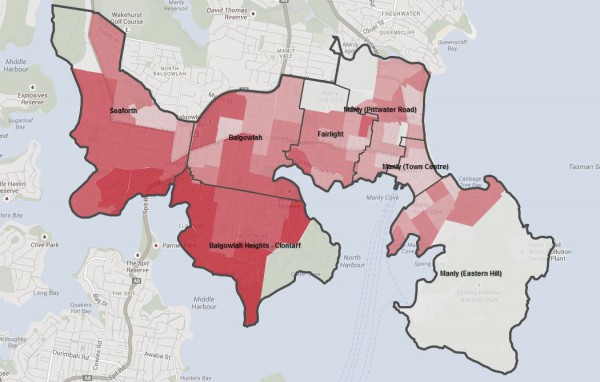
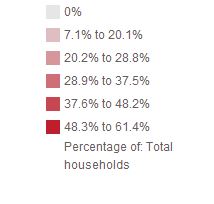
Locality Information
“The Beaches” area is used as an often casual term which is used to describe Northern coastal and beach suburbs of Sydney, in NSW, Australia. This locality used to comprise the LGA (local government areas) of Manly, Pittwater and Warringah.
Council Area
This Council was formed 12/5/2016 and consists of Manly, Pittwater & Warringah councils. Council seats include Manly Town Hall and Warringah Civic Centre.
The Federal divisions are the Division of Mackellar and the Division of Warringah
Customer Service Centres
Manly
No.1 Belgrave St, Manly New South Wales 2095
Ph:9976 1500
Dee Why
No.725 Pittwater Rd, Dee Why New South Wales 2099
Ph: 9942 2111
Mona Vale
Village Park, No.1 Park St, Mona Vale New South Wales 2103
Ph: 9970 1111
Avalon Beach
No. 59A Old Barrenjoey Rd, Avalon Beach New South Wales 2107
Ph: 9970 1111
The Sydney Northern Beaches of NSW has a population of over 225,000 residents.
Allambie, Wheeler Heights, Narraweena, Beacon Hill, Collaroy, Cromer, Dee Why, Freshwater, North Curl Curl,Narrabeen,North Balgowlah, Collaroy Plateau, Queenscliff, North Manly, Terrey Hills, Brookvale, Curl Curl, Manly Vale, and Allambie Heights.
Pittwater suburbs:
Mona Vale, Avalon, Elanora, Newport, Warriewood, Ingleside, Palm Beach, Bayview, North Narrabeen, Bilgola Plateau, Clareville, Whale Beach and Church Point.
So if you have trouble with Ants, Fleas, Funnel Webs or other Spiders, Cockroaches, Rodents, Ticks, or White Ants, call us today on 0417 251 911. We are very well equipped with thermal imaging cameras for extremely accurate Pest Inspections and termite reports.
Termite Control
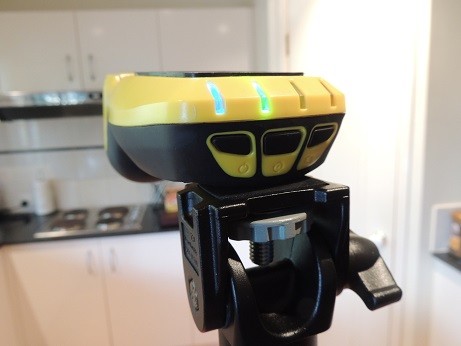
Environmentally Safe Methods For Your Family
Termites have developed into a serious risk throughout the Sydney Region, especially around bushy areas.
The lush foliage and abundant gum-trees provide an ideal habitat for any termite colony and have led a dramatic increase in termite activity within the area.
Termites are a quiet menace that can do tens of thousands of dollars worth of damage without showing any blatant signs of infestation.
Many homes within the Northern Beaches of Sydney have succumbed to their ferocious appetite, in some cases causing irreparable damage. None of which is covered by any Australian Insurance Policy!!
A1 Pest Control has faithfully serviced the Northern Beaches and North Shore over the past few decades. Our team members are well qualified and have attained all the necessary training and beyond to ensure that they are equipped to deliver excellent service.
Customer service is a priority of ours and we strive to deliver prompt, reliable and lasting treatments.
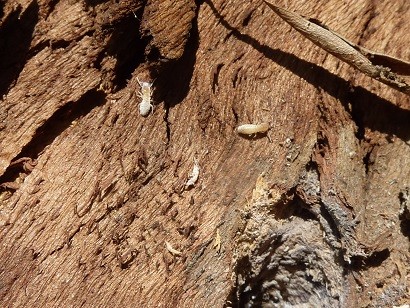
Speak to us for more information on these situations or to arrange treatments or inspections. Remember that we will use only low and non-toxic pest treatments so that your pets and family will not be affected.
Call us during business hours today for a free no obligation quote on Termite Control,
or contact us if you get allergic reactions, nasty tick bite or any pest problem on 0417 251 911 or email bruce@a1pestcontrol.com.au
Suburbs in Population Order | Termite Risk Factor |
| Dee Why Pop: 21,518 | HIGH |
| Manly Pop: 15,866 | HIGH |
| Frenchs Forest Pop: 13,473 | HIGH |
| Mona Vale Pop: 13,473 | HIGH |
| Avalon Pop: 9,905 | HIGH |
| Newport Pop: 9,301 | HIGH |
| Freshwater Pop: 8,866 | HIGH |
| Palm Beach Pop: 8,802 | HIGH |
| Belrose Pop: 8,780 | HIGH |
| Forestville Pop: 8.329 | HIGH |
| Narrabeen Pop: 8,207 | HIGH |
| Balgowlah Pop: 7,969 | HIGH |
| Collaroy Pop: 7,870 | HIGH |
| Cromer Pop: 7,749 | HIGH |
| Warriewood Pop: 7,501 | HIGH |
| Beacon Hill Pop: 7,457 | HIGH |
| Seaforth Pop: 7,139 | HIGH |
| Allambie Heights Pop: 7,009 | HIGH |
| Narraweena Pop: 6,608 | HIGH |
| Manly Vale Pop: 6,160 | HIGH |
| North Narrabeen Pop: 5,582 | HIGH |
| Fairlight Pop: 5,840 | HIGH |
| Collaroy Plateau Pop: 4,767 | HIGH |
| Killarney Heights Pop: 4,469 | HIGH |
| Elanora Heights Pop: 4,357 | HIGH |
| North Curl Curl Pop: 4,117 | HIGH |
| North Balgowlah Pop: 3,667 | HIGH |
| Bayview Pop: 3,620 | HIGH |
| Bilgola Plateau Pop: 3,518 | HIGH |
| Balgowlah Heights Pop: 3,342 | HIGH |
| Brookvale Pop: 3,161 | HIGH |
| North Manly Pop: 3,090 | HIGH |
| Terrey Hills Pop: 3,041 | HIGH |
| Wheeler Heights Pop: 2,986 | HIGH |
| Davidson Pop: 2,849 | HIGH |
| Curl Curl Pop: 2,414 | HIGH |
| Clontarf Pop: 1,737 | HIGH |
| Queenscliff Pop: 1,315 | HIGH |
| Church Point Pop: 997 | HIGH |
| Ingleside Pop: 974 | HIGH |
| Clareville Pop: 742 | HIGH |
| Scotland Island Pop: 579 | HIGH |
| Duffeys Forest Pop: 474 | HIGH |
| Whale Beach Pop: 253 | HIGH |
| Bilgola Beach Pop: 240 | HIGH |
| Lovett Bay Pop: 153 | HIGH |
| Oxford Falls Pop: 139 | HIGH |
| Cottage Point Pop: 98 | HIGH |
| Elvina Bay Pop: 86 | HIGH |
| Coasters Retreat Pop: 44 | HIGH |
| Morning Bay Pop: 39 | HIGH |
| Great Mackeral Beach Pop: 36 | HIGH |
